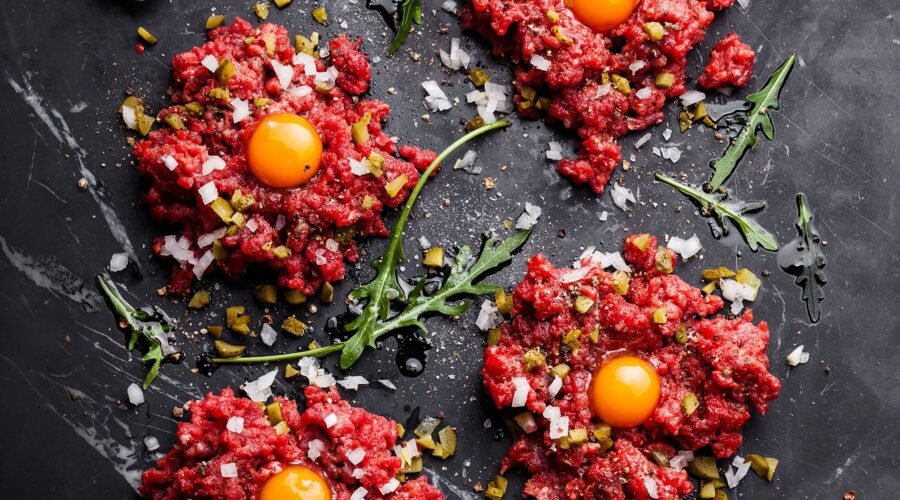Basics: The Only Way to Improve Steak Tartare? Wine
Think of a perfectly cooked medium-rare filet mignon and you’d bristle at the thought of adding anything more than some good salt and freshly ground pepper (OK, maybe béarnaise sauce, but just a touch). Take that same piece of beef when raw, however, hand mince it as fine as possible, and it becomes a blank canvas for a five-star tartare. Tender and subtle—you could even call steak tartare a “light” dish—it begs for a variety of punchy, spicy ingredients to enhance its flavor without completely masking it (pro tip: For most steak tartare recipes, start with half the suggested quantities of accouterments and add more to taste). Don’t relegate steak tartare to a restaurant dish: As long as you trust your butcher and your knife skills, it’s quick and relatively easy to make at home, where you’ll be able to experiment with a variety of wines to pair with it.
You May Also Like: How to Make Beef Tartare at Home
Gamy
Steak tartare isn’t exactly “beefy,” which is an adjective we associate more with cooked beef. In its raw form, it’s far less powerful, yet a bit more animalistic (some might say bloody) with a gentle, pleasant funk. Châteauneuf-du-Pape, made primarily from Grenache Noir in the southern Rhône, embraces its gamy side and is a confident pick for steak tartare pairing. You might get leather, tar, cigar, cinnamon and black tea among fruits like raspberry, blackcurrant and black plum.
You May Also Like: The Best Red Wines of 2023

Briny
With common add-ins like Worcestershire, mustard, capers, anchovies and cornichons to punch up the meat’s intrinsically soft flavor, steak tartare often has vividly pungent briny notes. For powerful tartares like these, look for juicy reds with low tannins and a wash of fruit. Blaufränkisch is a signature grape of Austria but is also found in the U.S., Australia and elsewhere. It’s bright and peppery, with loads of fresh berry and cherry fruit. With tartare, serve it with a slight chill.

Mineral
Raw beef has a faint aroma and taste of iron, which should come across as appetizing and never overwhelming in top-quality meat. Play to this mineral side with Mencía (called Jaen in Portugal), the leading grape in Spain’s Bierzo region and an extremely underrated food wine. It can show mineral notes of graphite, slate and iron alongside its aromatic red fruit, and is an ideal, if unexpected, pairing with steak tartare. It’s a great alternative for Pinot Noir fans.

Earthy
It might just be the mental picture of cows grazing in a field, but raw beef has fresh “outdoor” notes akin to potting soil or cut grass. This could be why volcanic wines—both white and red—seem to work so well with it; they can have smoky, flinty or stony qualities and often a hint of salinity, but are elegant enough to work with tartare’s delicate side. Listán Blanco (aka Palomino) from the Canary Islands combines body and structure with acidity and almost Burgundian flavors ranging from crisp citrus and green apple to nuts and roast fennel.
This article originally appeared in the 2023 Best of Year issue of Wine Enthusiast magazine. Click here to subscribe today!

Bring the World of Wine to Your Doorstep
Subscribe to Wine Enthusiast Magazine now and get 1 year for $70 $29.99.
Published: December 27, 2023
Like what you’re reading? Learn more about:


